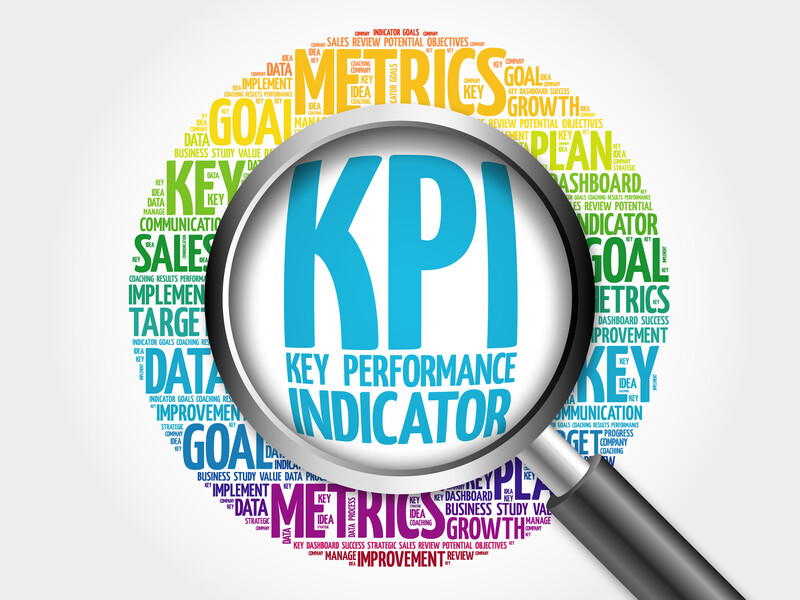Top KPIs to Improve Inventory Management
Key Performance Indicators (or KPIs) are essential for every business. They measure how effectively a company is achieving its key business goals and give indication where action is needed to make improvements. For many companies, inventory is the biggest asset. Therefore, it is important to define KPIs specifically related to inventory metrics, since the management of inventory is often a determining factor of how profitable a business is.
Some of the most important Inventory KPIs include:
Inventory Turnover
Inventory Turnover is the number of times a company sells through its inventory in a year. The calculation is: Cost of Goods Sold / Average inventory. Turnover can be compared to the industry average to determine how well a company is performing. Generally, the higher the turnover, the better.
One way Inventory Turnover can be improved is by reducing the average inventory a company holds. Forecasting software is an essential tool for increasing turn. It gives companies visibility to their inventory. If slow-sellers or outdated inventory from past seasons are still on hand, this is the first place to start liquidating. Then, going forward, unproductive inventory should be worked through on a regular basis – markdowns should be taken early for maximum profitability. Assortments should be analyzed and refined, eliminating duplicate styles and underperforming categories. Forecasting software helps companies optimize their inventory so they can achieve greater sales with less inventory.
Inventory Carrying Costs
Inventory Carrying Costs are the total costs of purchasing, housing, handling and accounting for depreciation of inventory. Capital costs represent the cash that is being tied up in inventory. Non-capital costs consist of costs associated with inventory storage and services. Inventory risk costs vary depending on the type of product that is being held: some may be perishable (e.g. food) or become obsolete quickly (e.g. technology). Accounting must be done for depreciation. Inventory risk costs also include insurance of the inventory, taxes, and shrinkage. Inventory carrying costs should be kept as low as possible.
Strategies to reduce Inventory Carrying Costs include inventory reduction, drop shipping from vendors, using Just in Time replenishment, and reducing safety stock. Forecasting software helps companies reduce their inventory carrying costs by accurately forecasting future sales so the right amount of inventory can be brought in at the right time, allowing for production lead times.
Inventory Write-offs and Write-downs
Related to Carrying Costs is the KPI of Inventory Write-offs and Write-downs. Accounting must be done for obsolete inventory. A write-off occurs when inventory is no longer sellable. A write-down occurs when the stock has not sold, but the market value has fallen below the purchase price. A forecasting system can help companies lower their write-offs and write-downs. It can give companies vision and insight into their inventory, so they are buying smarter: buying into the categories and items that are selling and avoiding duplication. Forecasting systems help companies project future sales so they are buying the correct amount of inventory.
Inventory Accuracy
Inventory Accuracy is extremely important. If inventory counts are incorrect, results can include stockouts for prolonged periods of time, customer dissatisfaction, duplication or excess inventory.
In addition to a Warehouse Management System or a system that records transactions, cycle counts are necessary to maintain accurate inventory counts. Even a small percentage of inaccuracy results in profit losses to a company so it is imperative to have a very high percentage of inventory accuracy. Forecasting software can also be helpful in maintaining inventory accuracy. By having visibility to all the sales and inventory data, discrepancies in inventory accuracy are often detected.
Other related Inventory KPIs to consider include:
- Weeks of Supply
- Average Inventory
- Fill Rate
- Stock Out %
- Order cycle time
- Backorders
When developing KPIs, companies should identify their areas of weakness and set KPI goals to improve. Inventory KPIs, like any KPI, should be evaluated using SMART criteria. They should be Specific, Measurable, Achievable, Relevant, and Time-bound. Action plans should be developed that enable the company to achieve these KPIs. Inventory KPIs must be clearly defined and communicated to ensure that the team players are working towards achieving the company objectives. As results are recorded, they can be evaluated against the goals that were set. Action plans can then be tweaked to direct the company to their goals.
Forecasting software is an essential tool for optimizing inventory and improving Inventory KPIs. [basic-code] ™ has helped many companies improve their inventory turnover, reduce their carrying costs and inventory write-offs and write-downs, and has even enabled its clients to detect inventory inaccuracies. ROI for [basic-code] ™’s forecasting software is usually achieved within the first 18 months of use.
Contact SAFIO Solutionstoday at SAFIOsolutions.com to see how they can help your company achieve its Inventory KPIs.









